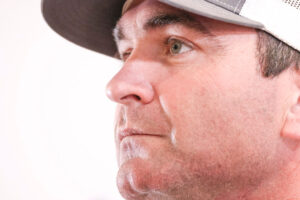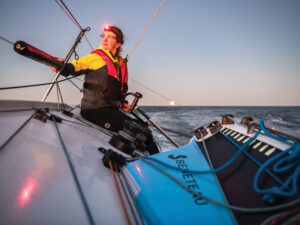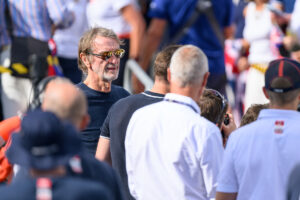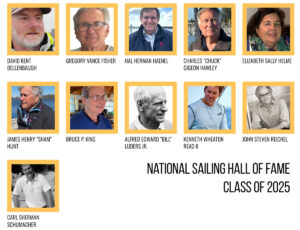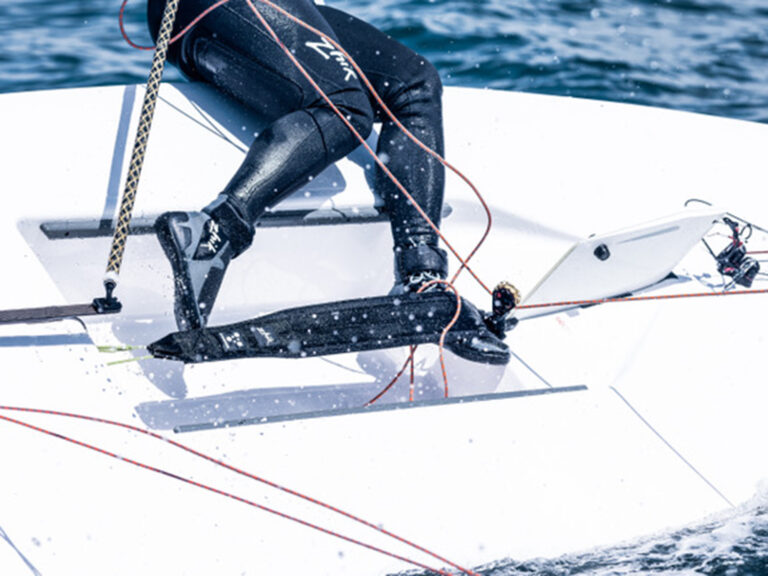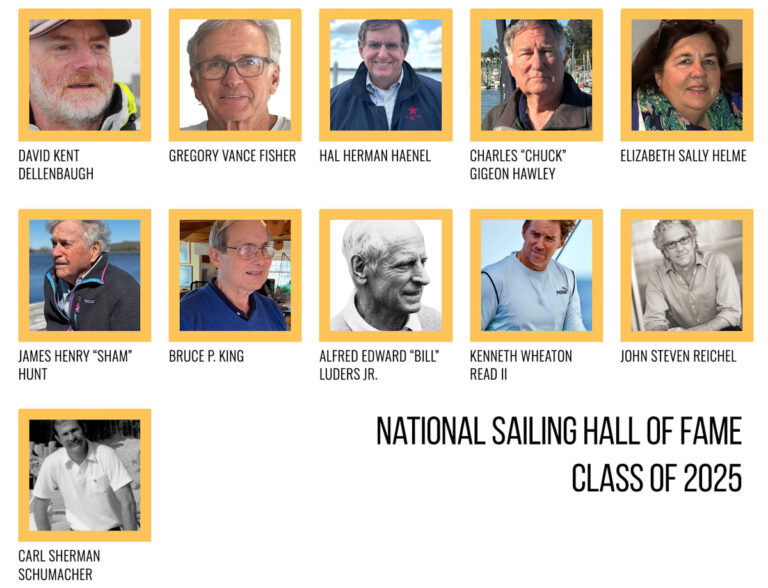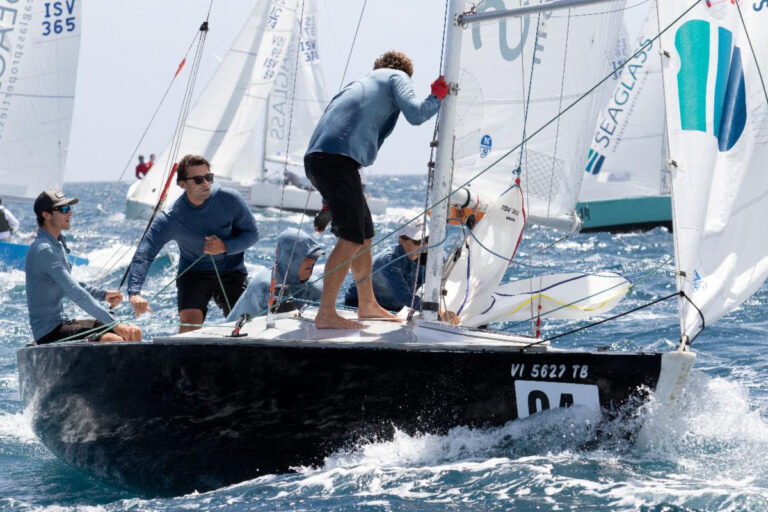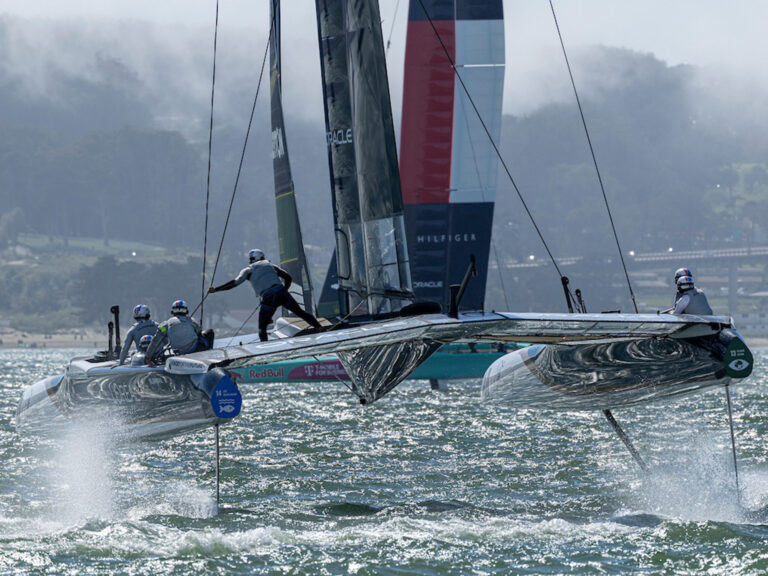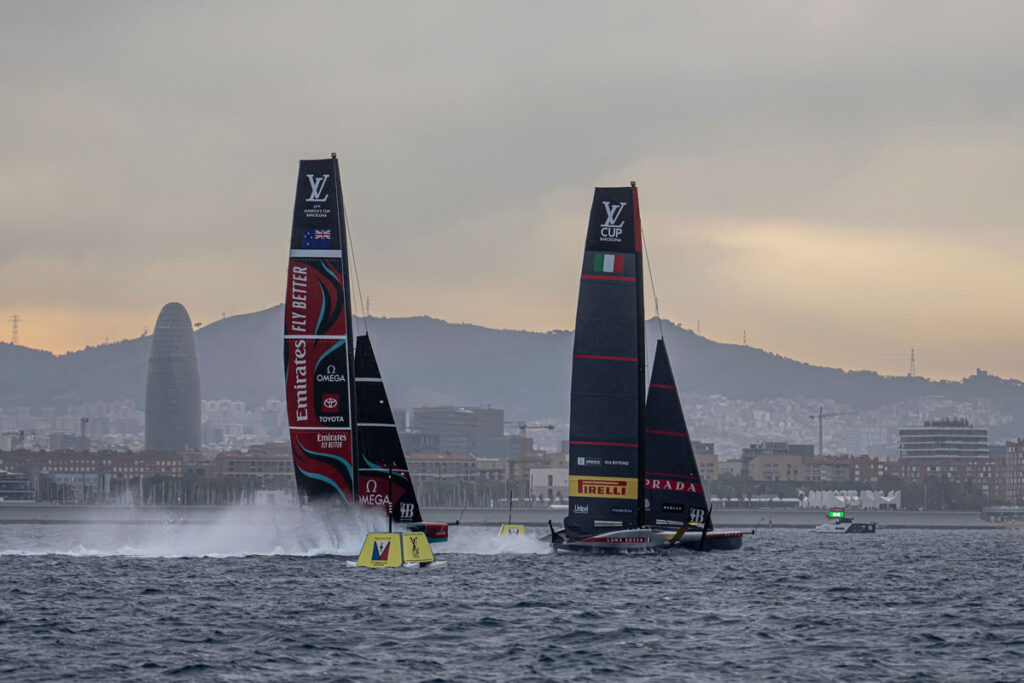
It was one of the defining moments of the Louis Vuitton Cup round robin races, when the convergence of oil, guys pedaling stationary bikes and Jimmy Spithill’s wizardry at the starting line left the defending America’s Cup champions as close to dead in the water as possible.
Sailing fans watching the broadcast saw Luna Rossa Prada Pirelli co-helmsman Spithill expertly roll over Emirates Team New Zealand and into such a favorable position that the Italian boat opened a lead of several hundred meters while the Kiwis floundered.
What viewers didn’t see—other than brief glimpses of the tops of crash helmets—were four crewmen known as cyclors pedaling away inside their cockpits. Cyclors have become the working-class heroes of this Cup as they power the hydraulic system the trimmers use to shape the sails.
The masterclass belonged to Spithill but the praise went to the cyclors.
Saved by The Cranks
“All credit to the boys on the bikes,” Spithill said after coming ashore following a heart-stopping broach and a brilliant lightning strike that led the race committee to quickly end the race. Luna Rossa was declared the winner after the Kiwis were given a DSQ after peeling off and heading back to port.
“That start required all the oil we had and will probably ever use,” Spithill said. “To be able to do that is a real sign of strength. We’ve had a few great races and the boys were really able to out-muscle them today and that’s the main goal.”
Other helmsmen have also been quick to praise the cyclors, who are back in this Cup after crew sizes on the AC75s were reduced from 11 to eight.
The cyclors’ pedal power pumps oil to provide hydraulic power that can be used immediately during maneuvers or saved in a 2-liter accumulator. They give trimmers/drivers the ability to get into stronger positions or, sometimes, out bad situations.
“There’s hydraulic oil just like you have in the brakes on your cars,” explains Ben Day, a former professional cyclist who is head of performance for the New York YC’s American Magic.
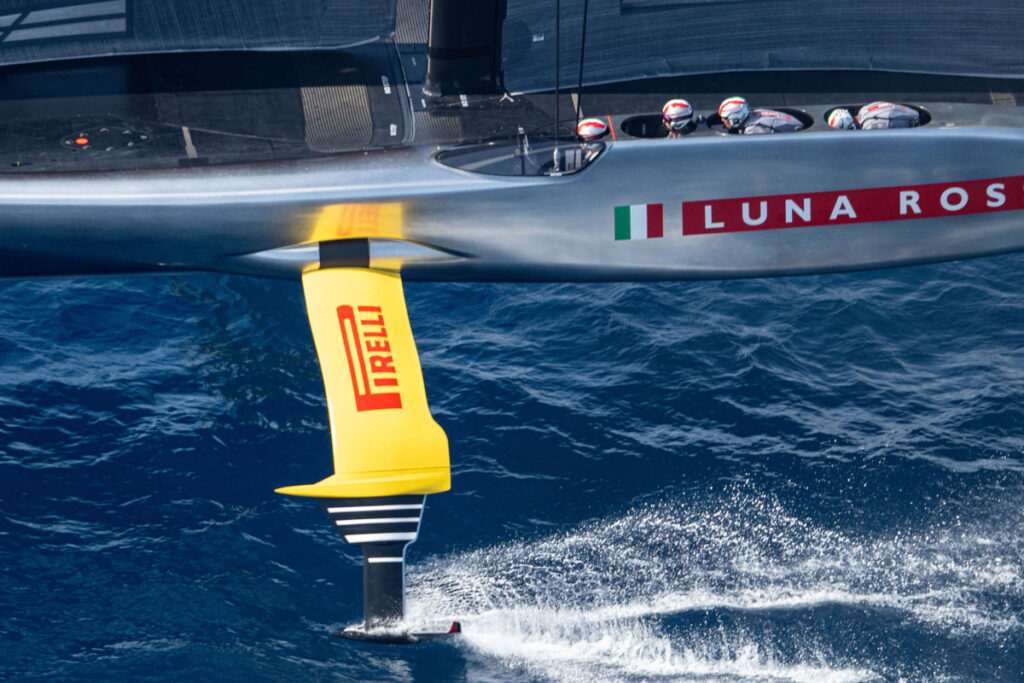
And what happened that day between Italy and New Zealand required, as Spithill said, all the oil.
Luna Rossa coach Philippe Presti gave the play-by-play of that start that illustrates why the cyclors are so important.
“We had to do a big bear-away and then a big turn-up and we went 90 degrees at an angle just to roll over Team New Zealand and eventually do another turn-up, a hard turn-up with sails in,” he says. “So, this move of itself, it’s just a killer because you have to move all the sails to be able to rotate the boat.
“The equilibrium is very fragile, so if you if you cannot trim the sail, the boat just lands and falls off and that’s what happened with the Kiwis. They had a full baggy sail they couldn’t control and basically the boat landed despite the 20 knots of breeze.”
Meanwhile, Luna Rossa nailed every maneuver and sped off into a big lead.
“That day, I believe the cyclors, the function was awesome and that’s why Jimmy was very happy and praised their effort and the way they operated,” Presti said.
Most cyclors were decorated athletes in other sports, such as cycling and rowing.
“I’ve seen all the hard work our cyclors have been putting in, and when they get going, they’re like a bunch of wild animals,” Spithill said. “It’s frightening actually—they’ve definitely broken a few bikes.”
American Magic’s first victory in the round robins, against Alinghi Red Bull Racing, came with a big assist from the cyclors as well.
Co-helm Paul Goodison, currently recovering from an injury sustained during the second round robin, said that day that the race was stressful because of quickly changing wind speeds.
“The team did a fantastic job of keeping the boat in the air. The cyclors did some incredible amounts of power at times,” he said. “Hats off to those guys for keeping us in the air at moments.”
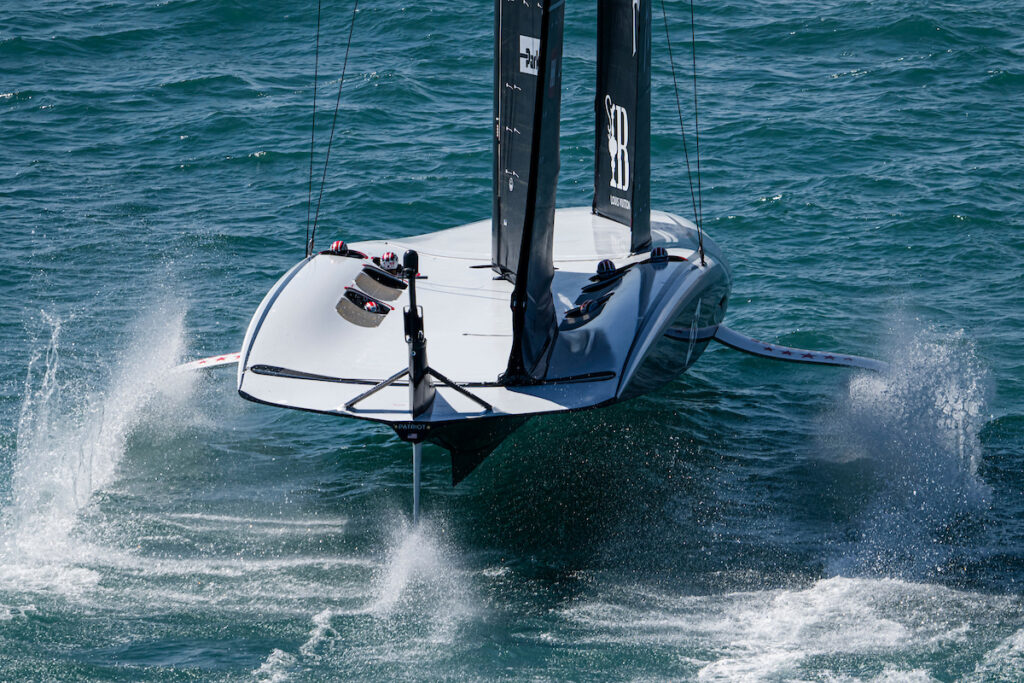
Day said starts put a lot of pressure on the cyclors because of their difficulty and intensity.
“We see the boats this America’s Cup, the teams are racing them more aggressively. It’s a little bit more tight combat racing and a lot of those maneuvers require a lot of demand from the cyclors provide hydraulic pressure,” Day said.
Another tough situation for the cyclors is racing in unstable winds of six to eight knots, which Day says has happened a lot. “So, at any moment there might be a call for a lot of sail manipulation, which obviously puts a lot of load on the cyclors. It’s been good to see the hard work done.”
At peak moments, American Magic’s cyclors are each generating the equivalent of 1,000 watts, Day said.
“There are quite a few moments where there is a call for a big spike, but throughout the rest of the race, it’s a very stochastic style effort. So, it’s not a matter of like one big sprint and then like an endurance effort after that. It’s a lot of sprints along a long period of time.”

